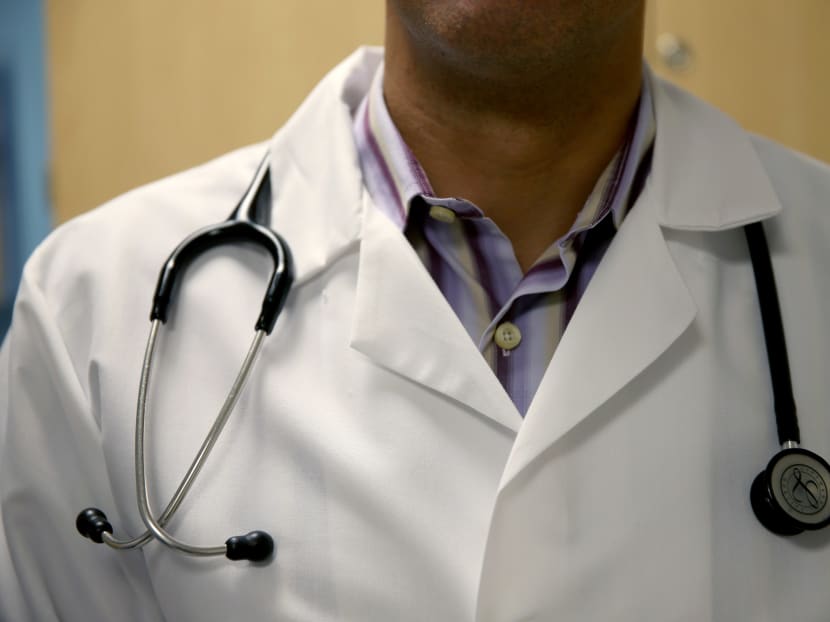Private surgeons’ fees to be publicised
The move is aimed at increasing fee transparency and helping patients make informed decisions, amid concerns of escalating healthcare costs.
SINGAPORE — The public can now get a sense of how much private hospitals charge for various surgical procedures, down to the surgeons’ and anaesthetists’ fees, with the Ministry of Health (MOH) now including total operation fees of the private sector among the data published on its website.
The move is part of efforts to increase fee transparency and help patients make informed decisions, amid concerns of escalating healthcare costs. The list, which previously covered only public healthcare institutions, will also include fees for more medical procedures, from 65 previously to 141 now.
Total operation fees form a component of the total hospital bill, which has been published — for both public and private sector — on the MOH website since 2003.
In 2014, the ministry began publishing total operation fees for 65 common procedures in the public hospitals. The data offer a range of fees for each procedure, from the 25th percentile and 75th percentile, and is broken down into unsubsidised and subsidised cases.
For the private sector, the total operation fees are broken down into three components — surgeon fees, anaesthetist fees and procedure-related facility fees. The MOH said there is no equivalent breakdown for public hospitals, as surgeons and anaesthetists in public hospitals do not charge a separate fee.
The figures were derived from actual hospital bills and fee breakdowns submitted by public and private hospitals between July 2014 and December last year. To ensure statistical significance, only figures for procedures with at least 30 cases will be published. For example, figures for myopia treatment at private hospitals, which includes Lasik, were not available, a check on the website showed. The data will be updated annually, said the MOH.
Among the newly listed procedures are total hip replacement and coronary artery bypass graft. The MOH said the increased number of procedures brings the coverage to 74 per cent and 79 per cent of the total volume of surgical cases at public and private hospitals, respectively.
Commenting on the move, Dr Wong Tien Hua, president of the Singapore Medical Association, which represents the majority of the doctors here, said it is too early to tell if it will have an impact on healthcare costs.
“MOH should monitor the situation carefully over the next few months before we think of publishing other data,” he added, in response to queries.
Nonetheless, the SMA welcomes the move, he said, noting that the relationship between a doctor and his patient is “an asymmetrical one”.
“Transparency offers the patient a reference point and benchmark of the fees expected for consultancy or medical procedure. Managing fee expectations gives comfort to patients as they know the range of fees charged by the medical fraternity,” Dr Wong said.
But the data published are not fee guidelines, and while they are “usually helpful” for common elective conditions when patients have the time to choose, they may not be helpful in emergencies, said Dr Wong.
Patients should also be aware that individual variations in disease severity or other factors may add to the complexity of a case, and they must also take into account the experience and expertise of the treating doctor, he added.
Member of Parliament Chia Shi-Lu (Tanjong Pagar GRC), an orthopedic surgeon, said having reliable data in the public domain will help patients ask the right questions when discussing treatment. It could even help consumers determine what type of insurance plan to buy, as they can use the fee data to gauge if coverage is adequate, he said.
Breaking down the facility fees component will also help patients be “more cognisant” of this aspect of costs, which Dr Chia said can be as much as 50 per cent of the operation fees. “Some patients already know this, they might say they want this doctor to treat them, but have the procedure done at another hospital,” he added.
While it remains to be seen if publishing operating fees will slow the escalation of healthcare costs, Dr Chia said making pricing information public has helped to moderate price increases in other industries. “It’s a good starting point,” he added.
Ms Shirley Tan, 43, who works in human resources, prefers to be treated at private hospitals. “(The published fees) will be useful as they will help me evaluate my options better, since the range of fees can vary quite a bit,” she said.
How much a procedure will cost at a private hospital
TOTAL HIP REPLACEMENT
Public hospitals: S$466 to S$850 (subsidised); S$6,291 to S$10,050 (non-subsidised)
Private hospitals: S$14,040 to S$25,036
- Surgeon fees: S$8,560 to S$16,050
- Anaesthetist fees: S$1,750 to S$2,500
- Facility fees: S$4,193 to S$6,479
INSERTION OF PACEMAKER
Public hospitals: S$422 to S$741 (subsidised); S$2,421 to S$3,556 (non-subsidised)
Private hospitals: S$6,302 - S$15,468
- Surgeon fees: S$4,640 to S$13,444
- Anaesthetist fees: Not available
- Facility fees: S$1,929 to S$3,010
COLONOSCOPY (DIAGNOSTIC WITH REMOVAL OF MULTIPLE POLYPS)
Public hospitals: S$534 to S$717(subsidised); S$1,741 to S$2,338 (non-subsidised)
Private hospitals: S$2,339 to S$3,430
- Surgeon fees: S$1,450 to S$2,161
- Anaesthetist fees: Not available
- Facility fees: S$674 to S$1,449
*Transacted fees range from the 25th to 75th percentile







